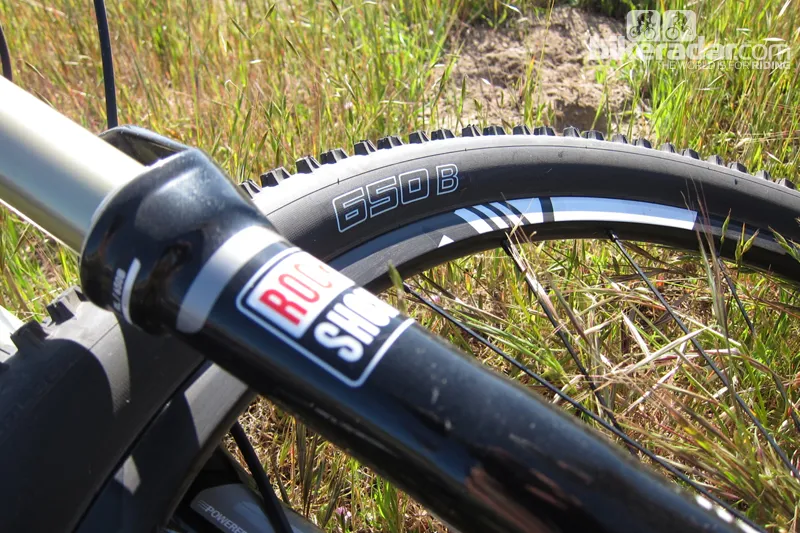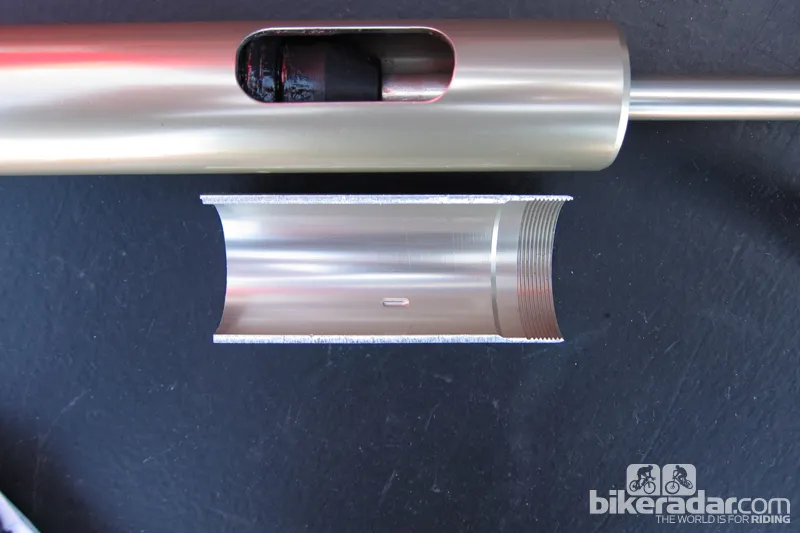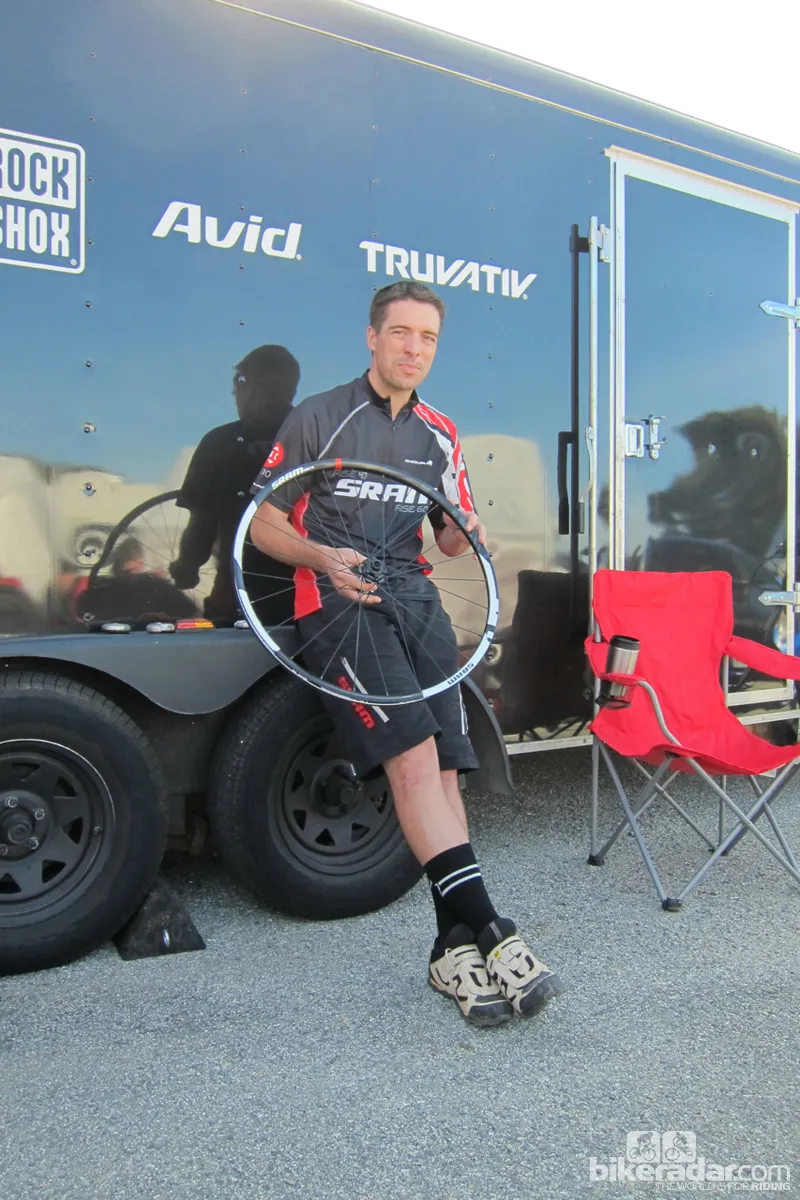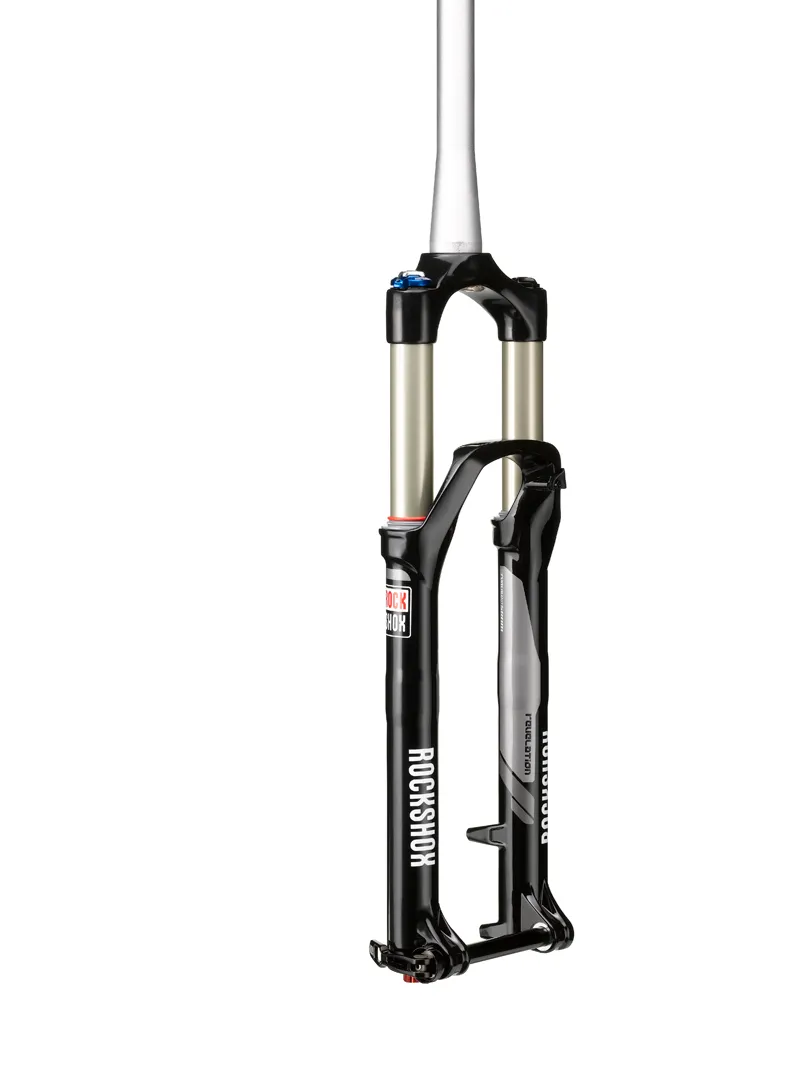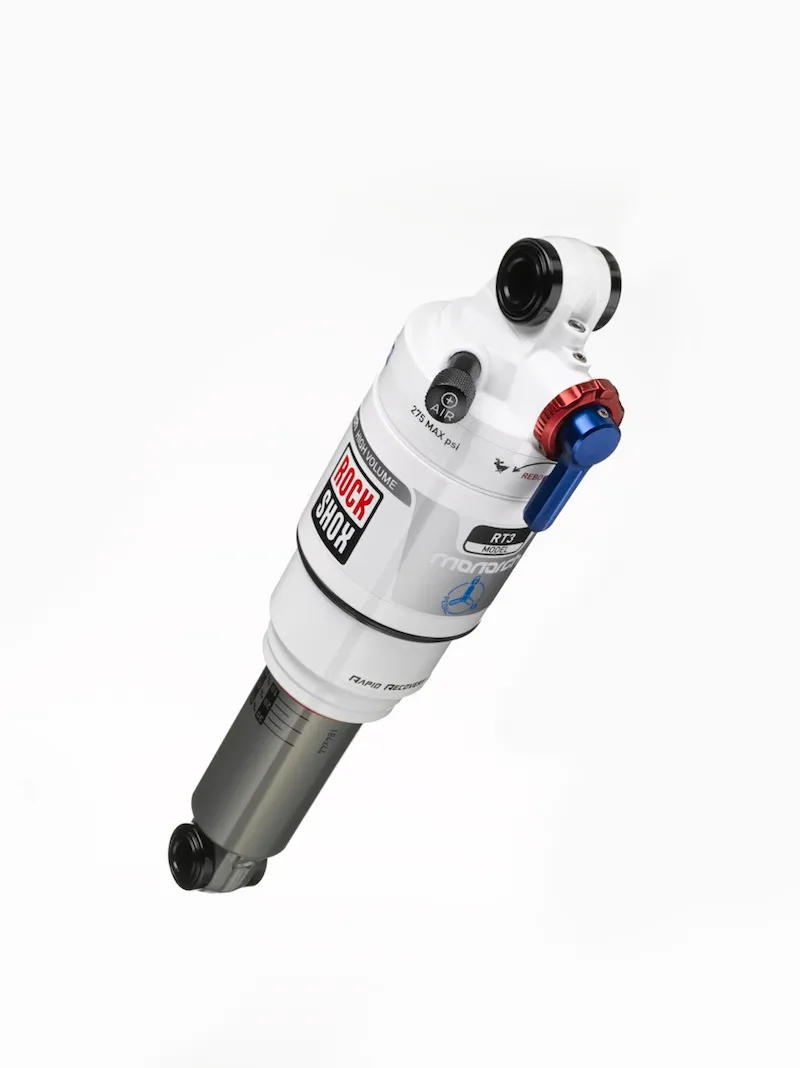The buzz in mountain bikes for 2013 is the 650B wheel size, so it's no surprise to see both SRAM and RockShox embracing this. RockShox have used the Sea Otter Classic to release a Revelation 650B suspension fork, while SRAM bring the second key component – wheels, in the form of the Rise 40 650B.
In addition to the 650B products, RockShox have unveiled a new Solo Air spring to replace the Dual Air system for shorter-travel forks, a new cable actuated Push-Loc remote lockout that mimics the operation of the hydraulic X-Loc system, and an updated RT3 damper for the Monarch rear shock.
Revelation 650B: New 32mm chassis ushers in spring and damper improvements
BikeRadar first reported on 650B wheels back in 2007 but it's only now, following the rise of the 29in-wheeled mountain bike, that companies are clamouring to get on board with the 'medium' (27.5in) wheel size. Jeremiah Boobar, RockShox's product manager, told BikeRadar that demand from product managers had put the 650B wheel size in the spotlight and pushed it through a rapid development at SRAM. “Many of the European brands missed out on the initial 29er wave, and they’re ready to go all-in with 650B,” he said.
RockShox’s first 650B fork, and their only one for 2013, will be a Revelation model with a travel range of 100-150mm. It retains the 26in fork's 32mm stanchions but uses 650B-specific lowers with a 15mm through-axle. The new fork, which will be available from June, also serves to usher in RockShox’s latest Solo Air spring.
Currently used on the BoXXer downhill fork and mid-range Recon and Sektor trail forks, this will come as standard on the 2013 SID and Reba, and as an option on the Revelation, BoXXer, Lyrik, Argyle, Totem, Sektor, Recon and XC32. The main reason for the shift from Dual Air to Solo Air is that it's a much simpler system for riders to understand.
“No matter what weight rider you are, you’re going to get an optimal setup,” said Jed Douglas, RockShox's product manager. “You can be an 80lb rider or a 300lb rider but once you set up your fork with the desired amount of sag, you’re going to have a balanced positive-negative air spring system with that nice plush feel off the top.”
Solo Air doesn't provide the same fine-tuning of feel as Dual Air, with its independently adjustable positive and negative air chambers, but gone too is the hassle that tuning required. The new system simply requires the rider to set their sag; the main and negative springs then self-set thanks to a small rolled dimple low on the inner wall of the left stanchion tube which allows air transfer when the piston moves past it.
Unable to load Media
RockShox's Jed Douglas explains how the updated Solo Air spring works
While RockShox claim the system is simpler as it has fewer parts – and is thus lighter and more durable than the Dual Air design – our concern is that creation of that inner wall dimple is a difficult process, especially considering a poorly formed dimple will shred the air spring’s O-ring seal as it passes over it.
The 650B fork also comes with the option of a new cable actuated Push-Loc remote that mimics the push-push operation of RockShox's X-Loc hydraulic lockout. This is available with a discrete handlebar clamp or a MatchMaker X (MMX) fitting so it can be combined with an Avid brake lever and SRAM shifter. The new lockout is designed to work with the RL and RLT dampers found in Recon Silver, Sektor, Reba, SID and Revelation forks. Claimed weight is 48g, without cable. The Solo Air spring and new Push-Loc will be available in forks shipping in May.

The unique shape of the new Push-Loc remote accommodates cable routing and the space for the push button to recess
Rise 40 wheels: Now in 26in, 27.5in and 29in sizes
RockShox's parent company SRAM are supporting the demand for 650B too, offering the third model in their Rise wheel line in 26in, 27.5in and 29in sizes. “We think it has some potential and we wanted to get on board as soon as possible,” said Bastien Donze, SRAM’s mountain wheel product manager. “We don’t want to recommend a wheel size to a rider. We’re a component manufacturer and it’s about giving the choice to the rider, and we feel it’s our duty to offer the option.”
Development of the 650B wheels started in November. Since the hubs are the same used on the 26in and 29in variants, and the 24 Alpina stainless steel spokes are simply a different length, SRAM just had to change the aluminium rim tooling to be able to roll out the middle diameter hoops. SRAM have set production for mid-June, with delivery slated for late July and August, just in time for the fall trade shows. The 27.5in wheels’ price has been set at US$550. The front hub is convertible between 15mm axle and quick-release; the rear is available in 12x142mm or quick-release.

650B versus 26in. Is there enough of a benefit to justify the additional middle size? And where does it leave bikes like Santa Cruz’s new Tallboy LT?
Monarch RT3 rear shock: Three settings to mirror RCT3 up front, plus new rebound control
RockShox's latest Monarch RT3 shock offers the same three settings as the RCT3 fork damper – open, pedal and lock – each of which can be independently tuned, along with a choice of standard or high volume air cans. It also has a new ‘Rapid Recovery' rebound, which we expect to offer a similar benefit to the rebound tuning philosophy introduced with Vivid, which separates the beginning and end of the rebound stroke and control. RockShox give the rider control of the beginning stroke and keep the end stroke control factory set using a digressive tune — specifically a preloaded delta shim to control the deep end of stroke rebound damping — that ultimately allows the shock to recover more quickly from full-travel hits, and puts the rider at the top of the shocks supple stroke more for a better more lively ride.
The result of RT3 on the compression side, according to RockShox, is a shock that has a firmer lockout (something requested by racers and the European market), pedals more efficiently and flows more freely when open than past versions, and is also much more adjustable. They've also separated the three circuits so that they can be tuned accordingly, and so that tuning one setting does not affect the other settings' tunes. "When the OE customer [bike manufacturer] comes to us, we want to have a really tunable rear shock,” said Tyler Morland, the company's PR manager. “We’re about five times more tunable with this rear shock than the previous model.” The 2013 Monarch RT3 costs $274 and will be available at the end of May.

RockShox's new Monarch RT3 rear shock


